
10 Sentences of Simple Present Tense English Study Here
Simple present tense also called present indefinite tense, is used to express general statements and describe usual or habitual actions. In simple words, we can say that the simple present tense is used to describe routine acts. Formula. Its formula is very simple as only base form of verb is used.
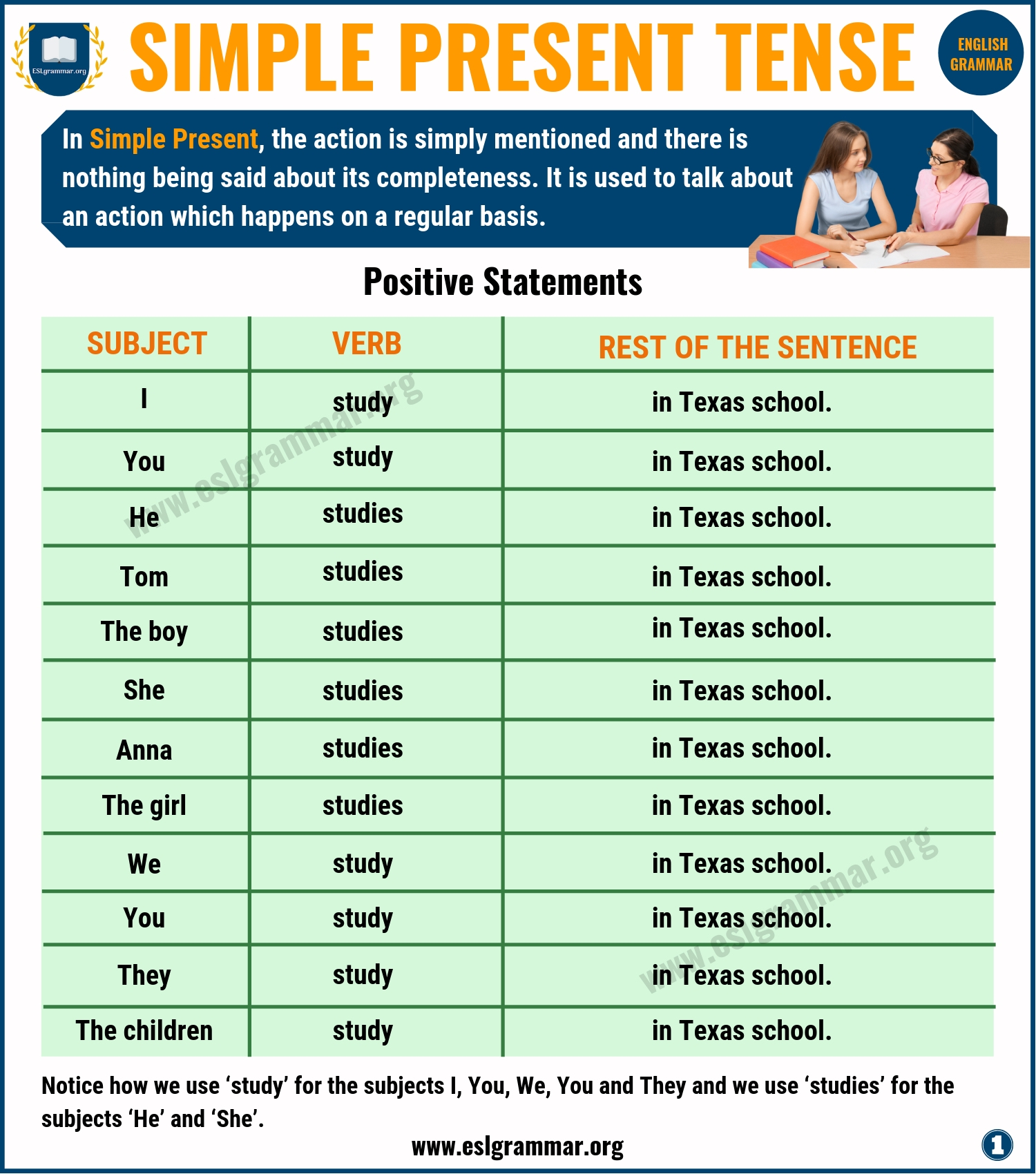
Simple Present Tense Definition and Useful Examples ESL Grammar
The simple present tense is an English verb tense used to describe facts and habits, to describe scheduled events in the future, and to tell stories. Here are two easy examples of each usage: (1) Simple present tense to describe facts and habits. Alan walks the dog every morning. He plays chess. (2) Simple present tense to describe scheduled.
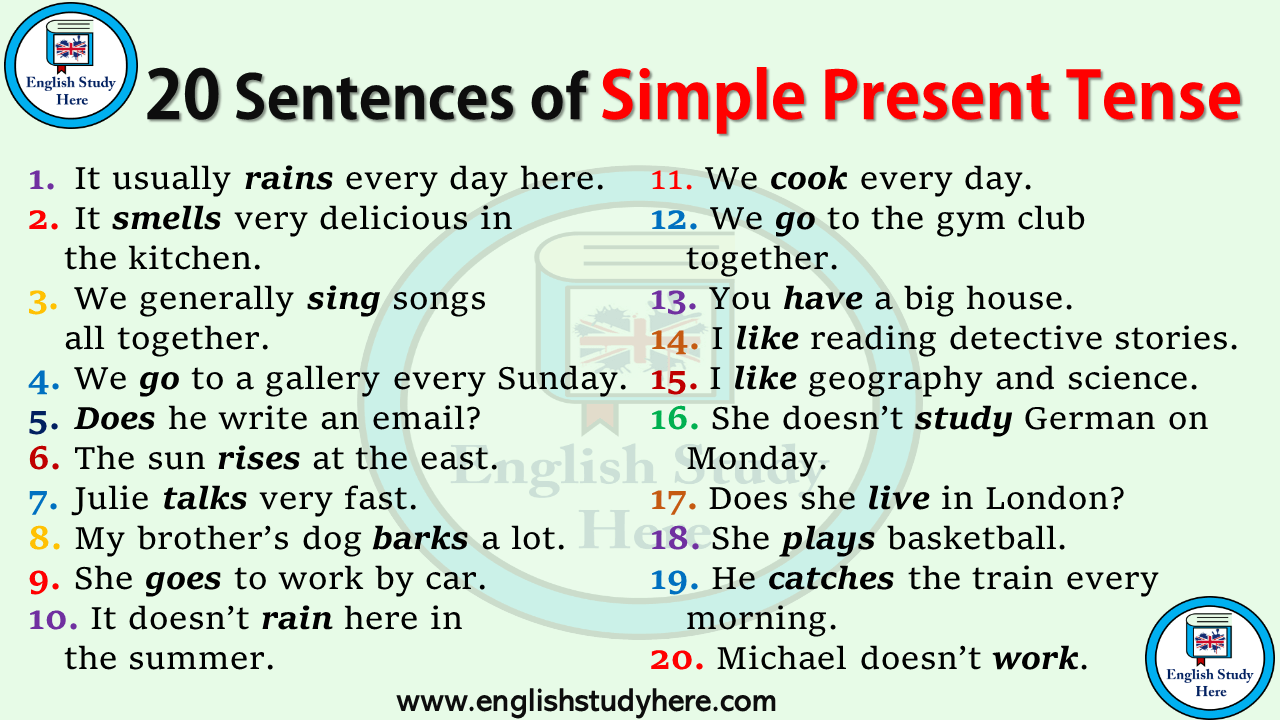
20 Sentences in Simple Present Tense English Study Here
Exercise 1: Choose the Correct Form of the Verb. For each sentence, choose the correct form of the verb in simple present tense. She (walks/walk) to school every day. My brother (knows/know) how to play the piano. The Earth (revolves/revolve) around the Sun.

Simple Present Tense Definition and Useful Examples ESL Grammar Simple present tense
The simple present (also called present simple or present indefinite) is a verb tense which is used to show repetition, habit or generalization. Less commonly, the simple present can be used to talk about scheduled actions in the near future and, in some cases, actions happening now. Read on for detailed descriptions, examples, and simple.

135 Examples of Simple Present Tense Sentences EngDic
The simple present is a verb tense with two main uses. We use the simple present tense when an action is happening right now, or when it happens regularly (or unceasingly, which is why it's sometimes called present indefinite). Depending on the person, the simple present tense is formed by using the root form or by adding s or es to the end.
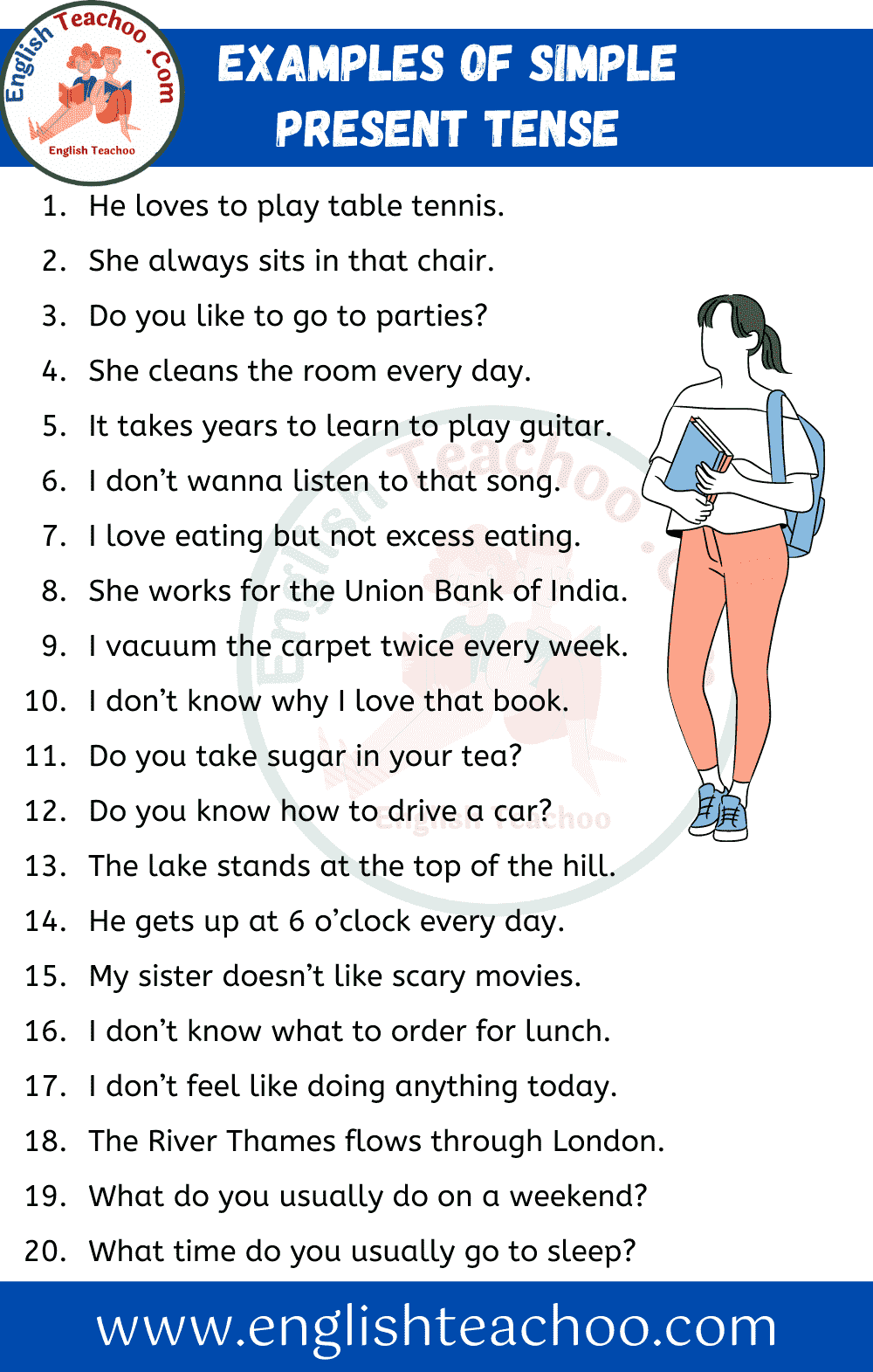
20 Examples of Simple Present Tense Sentences EnglishTeachoo
The Simple Present Tense is one of the most basic tenses in the English language. It is used to describe actions that are happening right now, habitual actions, general truths, and future events. This tense is also known as the Present Simple or Present Indefinite. To form the Simple Present Tense, we use the base form of the verb (also known.
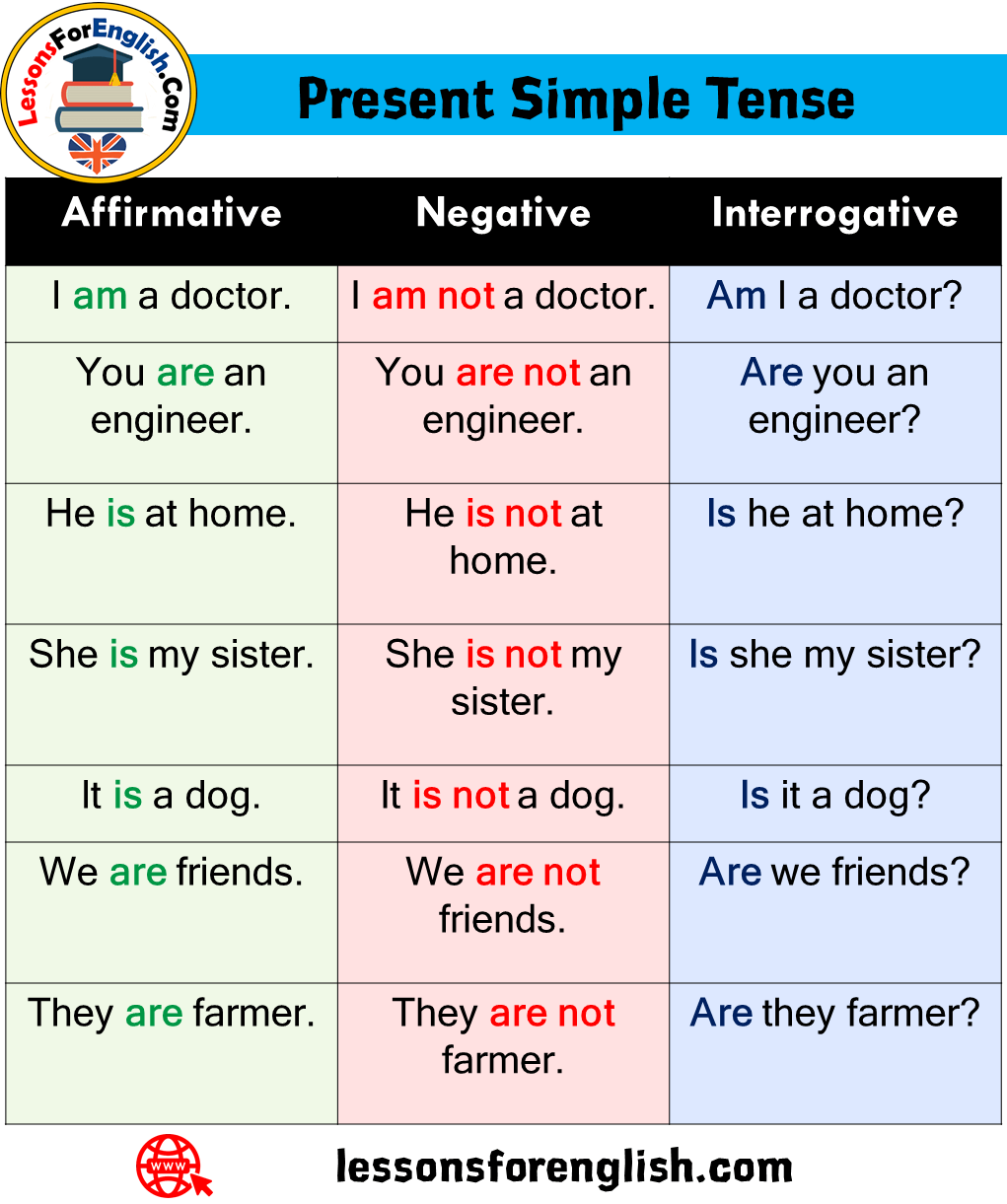
Simple Present Tenses Definition and 20 Example Sentences Lessons For English
Here are 50 Sentences of Simple Present Tense: I eat breakfast every morning. She works as a teacher. They live in a big house. He plays soccer with his friends. We go to the gym on weekends. The sun rises in the east. Cats like to play with toys. The earth revolves around the sun.

Contoh Simple Present Tense Examples Sentences With Adjectives IMAGESEE
Simple Present Tense Examples: Negative. These are some examples of negative sentences using the Simple Present. I don't know English. I don't have any money. I don't go to church. She doesn't like to run. She doesn't pray. She doesn't work. He doesn't have a beard.
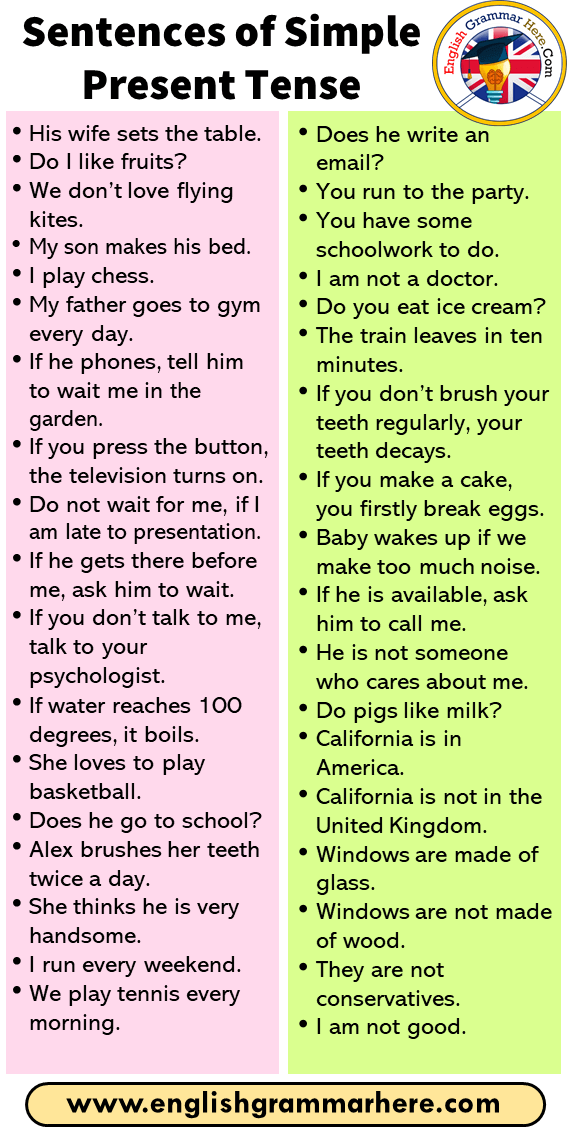
35 Sentences of Simple Present Tense in Grammar English Grammar Here
The above examples of Simple Present Tense are here to help you understand and use this tense properly and naturally. You should also get familiar with its usage and rules - visit the Simple Present Tense page to help you with that. For exercises visit the Simple Present Exercises. Check out the other tenses:
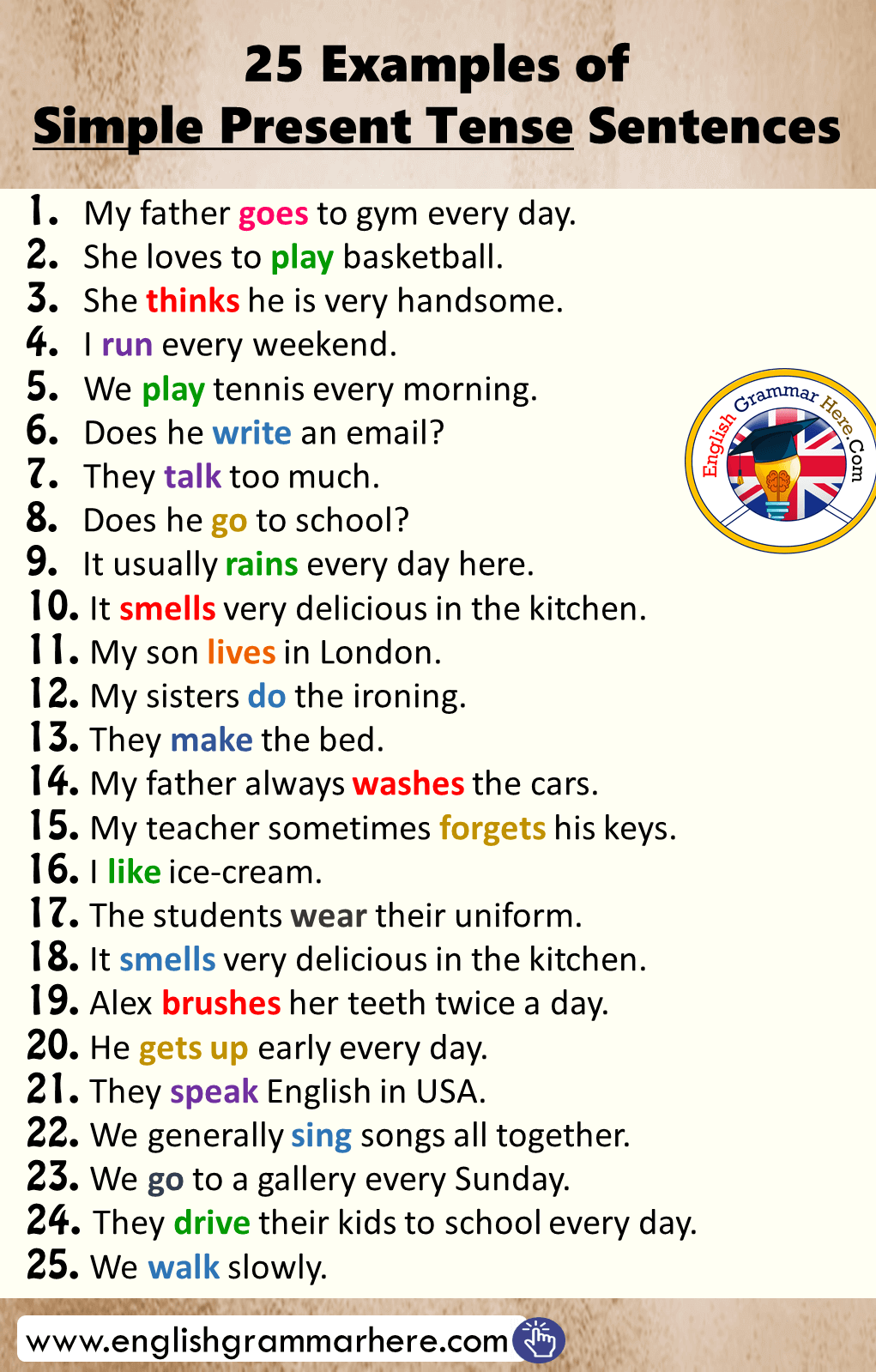
25 Examples of Simple Present Tense Sentences English Grammar Here
Hi SurajBeka, Actually, no, it isn't! Technically speaking, a "tense" is a verb form which shows the time of the action, e.g. play - present, played - past. The important thing is that it is a verb form - that is, the base verb is modified e.g. by adding "ed" to make the past tense.. However, to talk about the future, we do not change the base verb, but instead add another verb: will play.

70 Sentences of Simple Present Tense English Grammar Here
Conjugation of English Simple Present Tense. The conjugation of English verbs in the simple present is relatively simple. We add an -s/-es to verbs in the third person singular (he/she/it), otherwise the verb does not change. In positive sentences, we use the verb in its present form. In negative sentences and questions, we use the auxiliary.
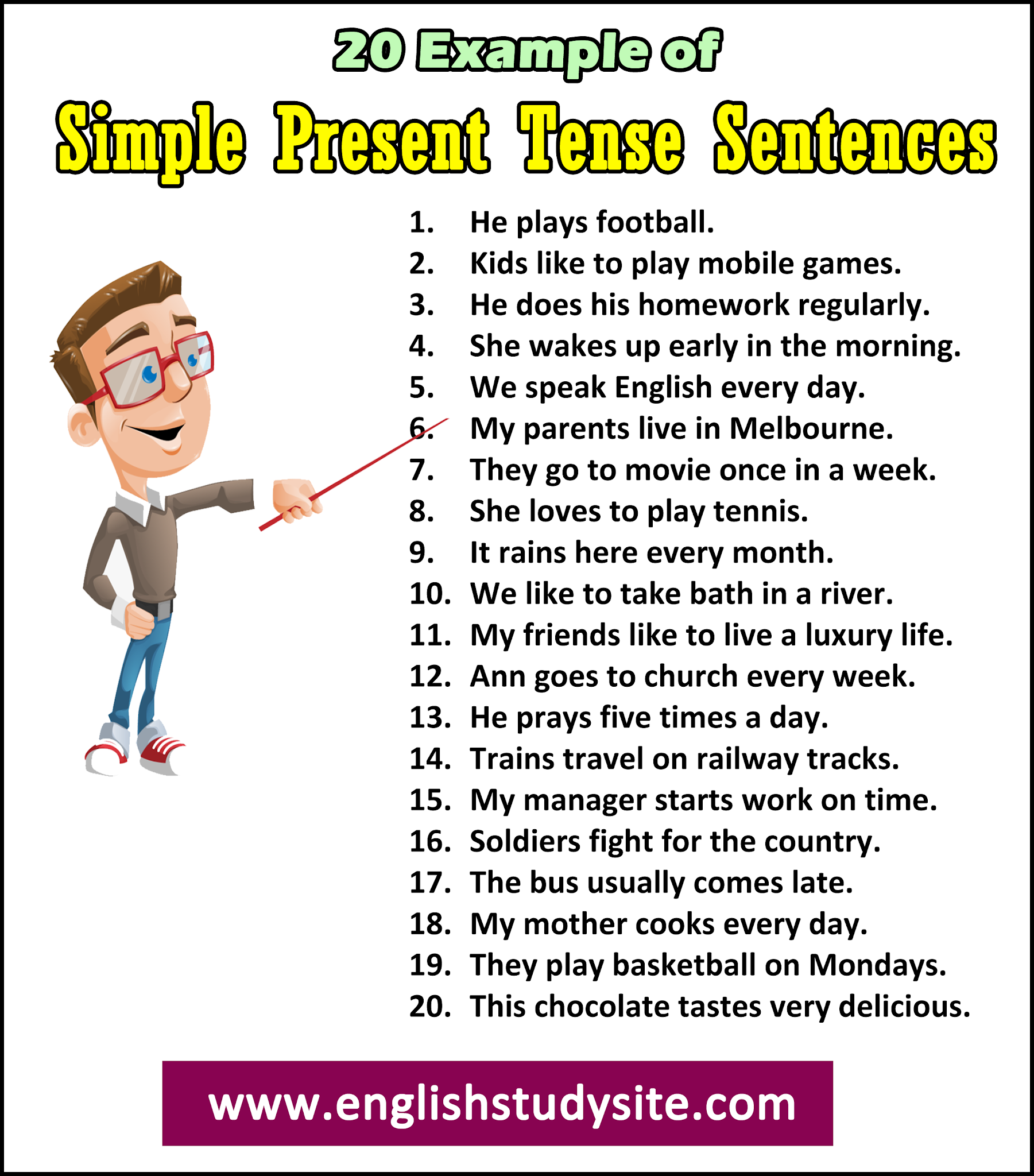
20 Example Sentences of Simple Present Tense
Most verbs in the simple present tense use the infinitive form (e.g., "run"). The only exception is the third person singular (used with "he," "she," "it," and any singular noun), which is usually formed by adding "s" to the end of the verb. Examples: Simple present tense in sentences Jan and Alana exercise. every morning.

20 Examples of Simple Present Tense Sentences »
Simple Present Tense Sentences (50 examples): The simple present tense is one of the most commonly used in English grammar tenses. It is used to express an action that is routine, repeated, or may state some facts.

100 Simple Present Tense Examples Simple Present Tense Sentences Examples EnglishTeachoo
Simple present tense (present simple tense) is a verb tense that describes the events and situations that do not change over time. We use simple present tense for the actions that happen regualarly, and that is why we use some frequency adverbs to express these repititive actions. " Do " and " does " are the auxiliary verbs of present.

50 Sentences of Simple Present Tense English Study Here
Sir I'm have some questions regarding simple present tense. For example Daniel goes to market or I don't like black coffee. These are simple present but what about these sentences like Tom does work everyday or I do work everyday.. It is not a sentence of simple present tense instead we can say that it is a sentence of present tense.

90 Simple Present Tense Example Sentences English Vocabs
100 Simple Present Tense Sentences Examples Present Simple Tense The Present Simple Tense is the most used tense in English and is a Tense that people use to describe things they always do. This Tense tells us how often something is done or whether it is done in daily life. The Present Simple Tense, which is used for routine tasks that are done continuously and repeated every day, is also used.
- How To Tie Shoelaces To Slip On
- Margarita Rosa De Francisco 2023
- فیلم سکس انسان با حیوانات
- Hoe Lang Is De Elfstedentocht
- Hoeveel Cc Heeft Een Scooter
- Ron Mueck Tentoonstelling Nederland 2023
- Waar In China Bevindt Zich De Verboden Stad
- 3 Wheel Electric Motor Scooter
- Jumbo Golf Nieuwerkerk Aan Den Ijssel
- Wat Kost Help Mijn Man Is Klusser